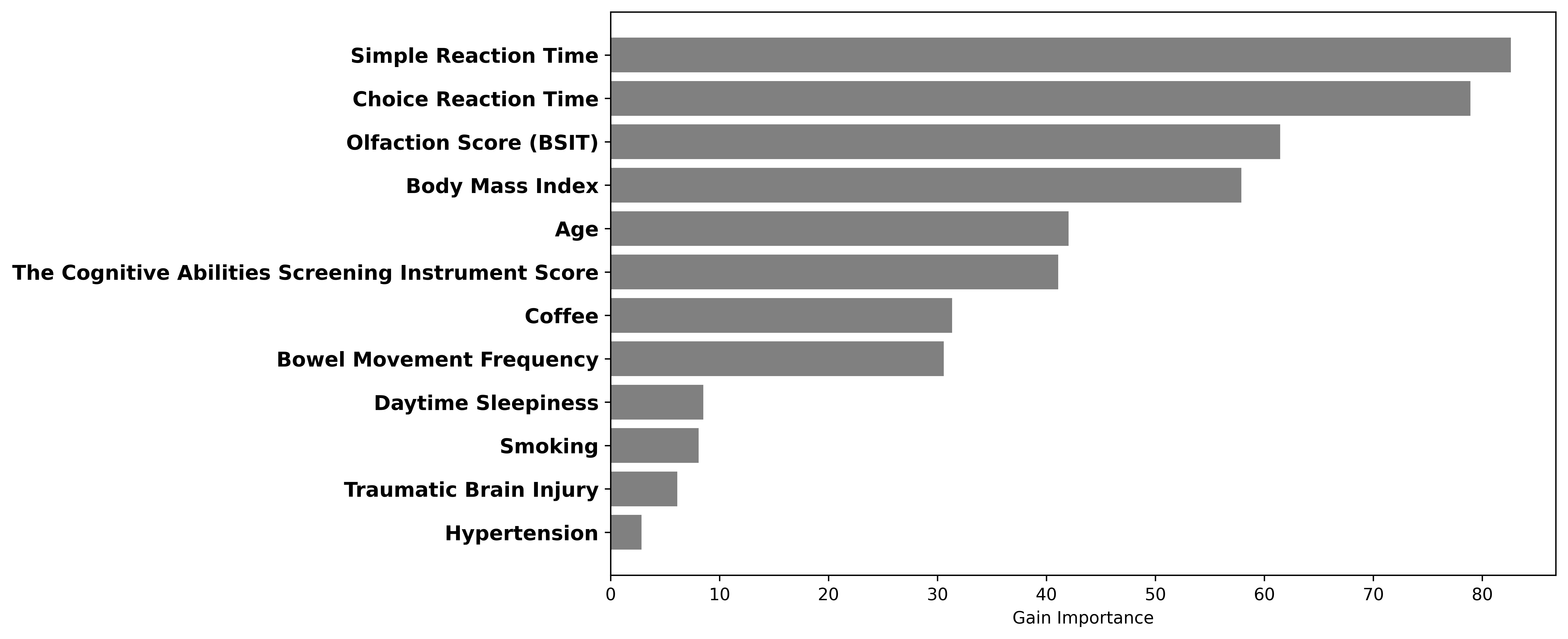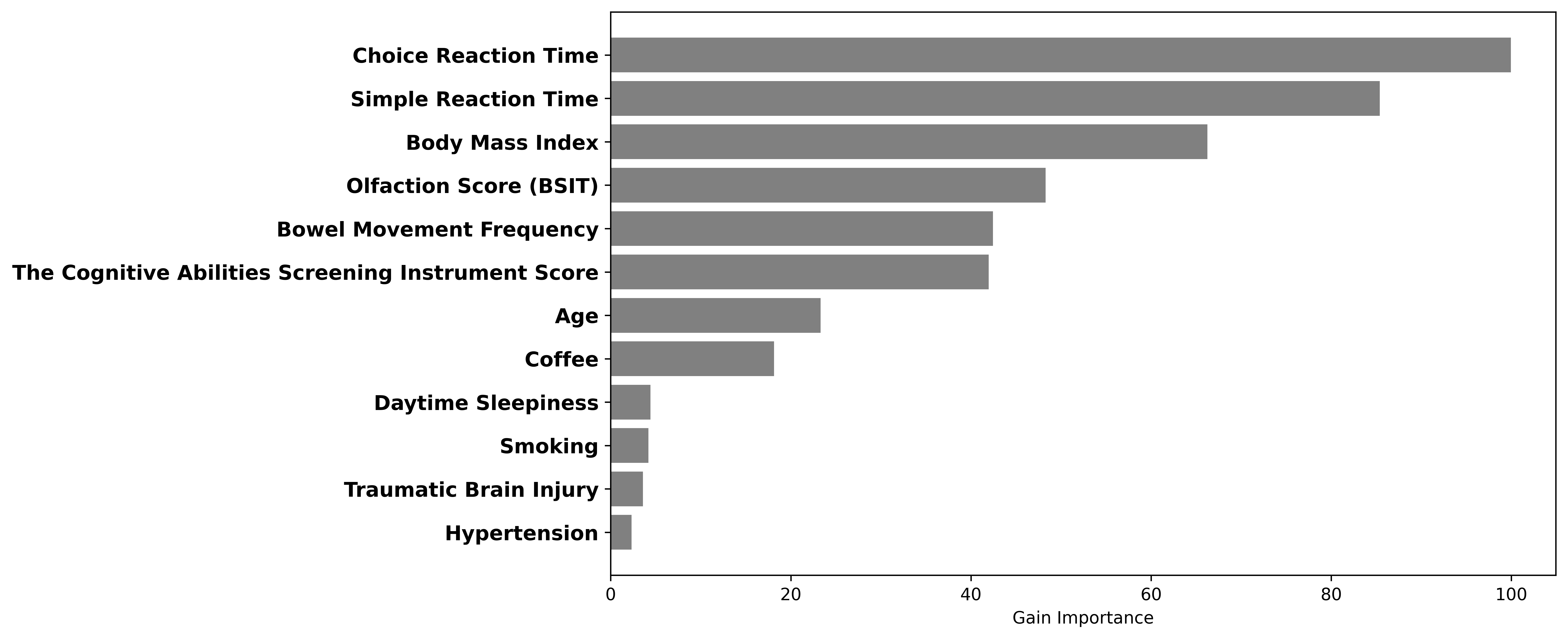Objective: To investigate associations between nigral neuron density and ML-based PD risk prediction.
Background: Early identification of persons at high risk for developing PD is essential to advance disease modifying interventions. ML may maximize the informative value of clinical variables for predicting future PD.
Method: We studied participants in the Kuakini Honolulu-Asia Aging Study (HAAS), a prospective cohort of Japanese-American men born 1900-1919.1 Participants were examined biannually from 1995 to 2012, with autopsies on about 20%. Incident PD was diagnosed by consensus of at least two PD experts. Those not diagnosed with PD prior to death were classified as controls. Substantia nigra pars compacta (SNpc) neuron counts and density (neurons/mm2) were determined.2 ML models included 12 predictor variables collected during or before the 1995 baseline exam, prior to PD diagnosis: age, BMI, hypertension, daytime sleepiness, bowel movement frequency, simple and choice reaction times, CASI score, brief smell identification test (BSIT), traumatic brain injury, smoking and coffee consumption histories. We used a Light Gradient Boosting Machines (LGBM) algorithm with five-fold cross-validation to predict the probability of PD diagnosis within 3 years or 5 years. We tested the correlation between predicted PD risk scores and neuron densities in both cases and controls.
Results: A total of 292 individuals met study criteria, 25 of whom were diagnosed with PD within 3 years and 41 within 5 years after baseline. The LGBM model accurately identified those at risk for PD within 3 years (area under the curve (AUC) 0.82 (95% CI 0.75-0.89)) and within 5 years (AUC 0.77 (95% CI 0.71-0.84)). A variable importance analysis (Figure 1) identified slower reaction times, reduced olfaction, and higher BMI as the strongest predictors of PD. In 11 cases and 103 controls with nigral neuron density data, LGBM-predicted PD risk was significantly inversely correlated with SNpc neuron density. Correlation was strongest for the ventromedial quadrant (r = -0.57, p<0.01) (Figure 2).
Conclusion: ML can accurately predict future PD and SNpc neuron density from simple clinical variables. This approach holds great promise for identifying individuals for clinical trials. Generalizability of model coefficients to other populations remains to be determined.
References: 1. Ross GW, Abbott RD, Petrovitch H, Tanner CM, White LR. Pre-motor features of Parkinson’s disease: the Honolulu-Asia Aging Study experience. Parkinsonism Relat Disord. 2012 Jan;18 Suppl 1:S199-202. 2. Ross GW, Petrovitch H, Abbott RD, et al. Parkinsonian signs and substantia nigra neuron density in decendents elders without PD. Ann Neurol. 2004 Oct;56(4):532-9.
To cite this abstract in AMA style:
I. Karabayir, L. Butler, S. Goldman, R. Kamaleswaran, F. Gunturkun, R. Davis, GW. Ross, H. Petrovitch, K. Masaki, C. Tanner, G. Tsivgoulis, A. Alexandrov, O. Akbilgic. Machine Learning (ML) Prediction of Parkinson’s Disease (PD) Risk and Nigral Neuron Density [abstract]. Mov Disord. 2021; 36 (suppl 1). https://www.mdsabstracts.org/abstract/machine-learning-ml-prediction-of-parkinsons-disease-pd-risk-and-nigral-neuron-density/. Accessed October 17, 2025.« Back to MDS Virtual Congress 2021
MDS Abstracts - https://www.mdsabstracts.org/abstract/machine-learning-ml-prediction-of-parkinsons-disease-pd-risk-and-nigral-neuron-density/



